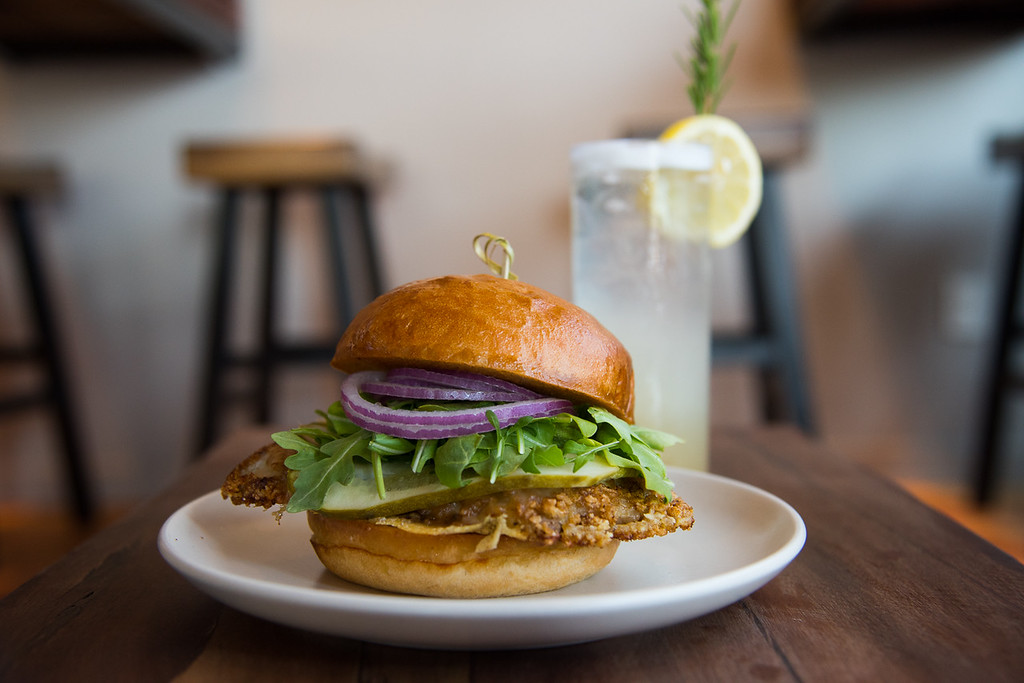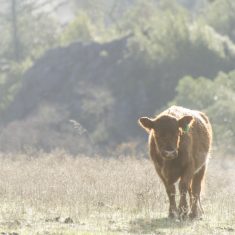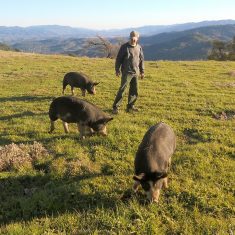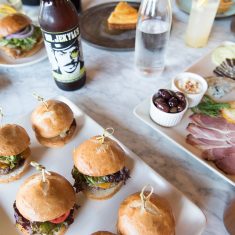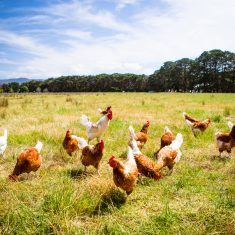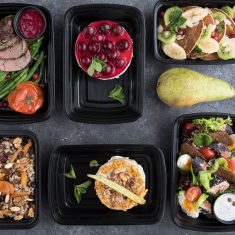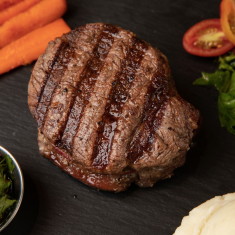Developing a Farm Driven Restaurant
With “pig” in the name, you can expect The Golden Pig to serve excellent pork. In fact, the restaurant literally goes whole hog, using the entire pig when sourcing pork. Talking with Hilary Forget, the general manager, one of the biggest differences between The Golden Pig and other restaurants is in the sourcing of proteins. This commitment reflects the establishment’s Farm Driven foundation.
Typically, restaurant kitchens order exact cuts of meat needed – thirty steaks or a pork butt, for example. Since opening, The Golden Pig’s menu was crafted around using the entire animal. Along with serving pork chops, loin is used for schnitzel, pork butt and picnic are used for pulled pork, and the head is made into paté. Similar thought is put into using beef – an entire grass-fed steer. Kitchen staff know how to prepare and cook all the cut of pork and beef. Very little is wasted. In the poultry department, any unsold whole rotisserie chicken is used for pot pie.
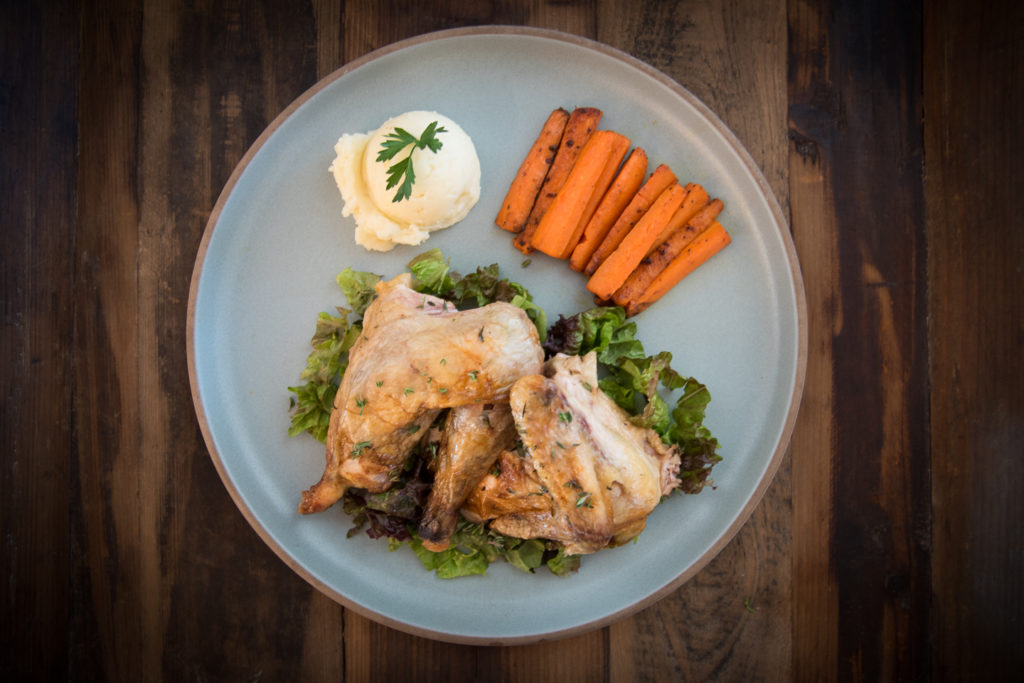
Just as the ideal biodynamic farm closes the fertility loop, Hilary notes, “We’re trying to close the loop. We use the entire pig to serve a well-balanced meal, and we put less waste back into the ecosystem.” This zero-waste ethos runs in the composting of scraps and leftovers and using cloth napkins, biodegradable to-go cutlery, and soon, single-use drinking straws.
Hilary states that the other big difference between The Golden Pig and typical restaurants is that all the produce is organic, distributed by Veritable Vegetable. This is no easy task as a small restaurant that must meet their minimum buying requirement. Beyond a relationship with Heart Arrow Ranch and sourcing wine, olive oil, and proteins from there, having meaningful relationships with vendors that practice sustainability and offer eco-friendly options for the restaurant and bar is important. The restaurant aims to provide consistency and quality in its offerings, and having the customer leave feeling nourished by food and beverages from sustainable and local vendors.
Balance has to be found in meeting the needs of locals and people passing through Hopland, which means having a fixed menu. Returning customers know what to expect. Certain seasonal items will change, such as Brussel sprouts replacing shishito peppers when summer turns to autumn, but the central dishes remain the same. The hyper-local, organic food movement includes wonderful farm-to-table restaurants with ever-changing menus. However, like the traditional CSA vegetable farms that have evolved to customizable CSA shares and friend of the farm cards to offer choice and convenience to consumers, the restaurant is meeting customers in the middle.
The bar program operates on the same philosophy as the kitchen. Mendocino and Sonoma County wines, beers, ciders, and spirits stock the bar, and the bartenders give careful attention to the craft cocktails and shrubs. When you stop by The Golden Pig for a meal or just a drink, taste the difference in the ingredients consciously produced, all the way back to the farm that it came from.

